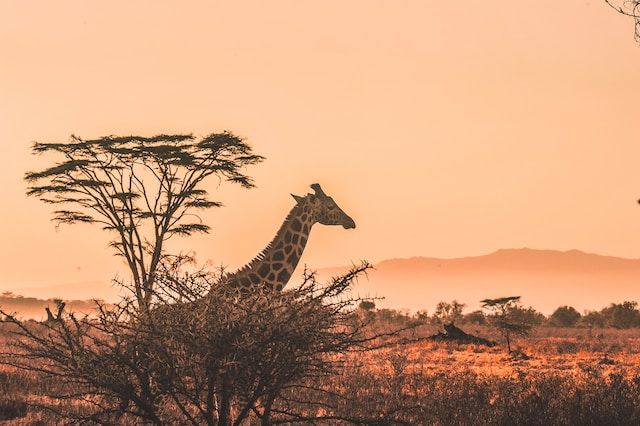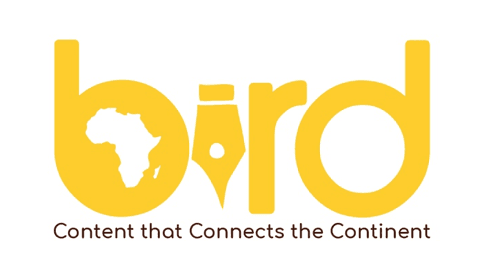Lots of elephants can mean elephants in the maize. One elephant's morning meal can quickly spell disaster for a family... a situation that can escalate, leaving dead or injured people, animals, or both. In a country like Kenya, where animals regularly roam well beyond park boundaries, human-animal conflict can be a bigger problem than poaching. One wildlife conservancy has a solution.

Lucy Githugo, bird story agency
As the sun creeps above a rising mist to cast a warm, golden glow across the savannah and the hills beyond, the land is already busy with the routine of a thousand animals; the trek to watering holes, the foraging, and the predating that brings tourists in their thousands to witness a spectacle found no-where else, but in Africa. This is the beginning of a new day in the 65,000 acres of the Lewa Wildlife Conservancy.
The early stirrings of life have had ranger Dominic Maringa up since pre-dawn, keeping an eye on it all. He doesn't use a 4x4 vehicle or binoculars to cast an experienced eye over the park, however. As Head of Conservation and Wildlife Programs at the conservancy’s modern Joint Operations Command Center, Maringa sits before an array of screens displaying live feeds from all over the park.
Each screen could just as well be its own cinema. On one, Rocco, a formidable rhino, can be seen standing against a fence post separating the conservancy from the neighbouring Ngare Ndare forest, apparently fixated on a spot in the forest. He stands totally still, as if, in his own short-sighted way, he was pondering one of life's great mysteries. On another screen, Kendi, a majestic elephant, can be seen strolling down the well-trodden and geo-fenced Leparua-Lewa route, known to both wildlife and the nearby community members as a bridge between human settlements and the untamed wilderness.
Across the set of screens, tales of harmonious (and at times less harmonious) coexistence among elephants, lions, rhinos, monkeys, and other wild animals are visible. Sometimes, however, the harmony on the screens at the heart of this virtual theatre, located in Meru County in Kenya's Eastern Province, is upset by something more ominous than a lion killing a watering impala: the overlapping of wild animals and humans.
This is why Maringa is leaning forward with keen interest, closely watching the movements of both Rocco and Kendi. He seems to know their moves and intentions almost before they do.
Without delay, he contacts rangers stationed nearby at both locations, alerting them to the animals’ behaviour.
Maringa is well aware that without his interference and his professional understanding of the animals on his screens, the safety and harmony of this fragile ecosystem could well be in the balance. His first responsibility is to community members in the nearby villages.
Long-time community member Tarayia ole Mokoto knows very well why.
"I've lived near Lewa Conservancy for as long as I can remember, and I've had my fair share of encounters with wildlife. While it can be thrilling to see these magnificent creatures up close, it's not always without its challenges. Once, a group of elephants wandered into our farm, and they trampled our crops. It was devastating for us, as farming is our livelihood. But now, with the conservancy's plan to put transmitters on community animals, it gives me hope. We can monitor their movements and hopefully prevent such incidents in the future. It's about finding a balance between conservation and coexistence,” Mokoto said.
Another resident, Sharon Lila, explained the importance of close monitoring of the park's animals.
"Living near Lewa Conservancy has its ups and downs. I remember a time when a pride of lions strayed too close to our village, and it was terrifying," she explained.
"With the idea of transmitters on community animals, it's like a sigh of relief for us. We can know in advance when these animals are near, and it helps us take necessary precautions. It's a step towards ensuring our safety and the well-being of these incredible creatures," Lila said.
Taking action, the rangers move swiftly to intervene with a burst of sound and motion. They quickly ensure that Rocco and Kendi retreat from the conservancy's borders and move back into the heart of the conservancy, where other animals appear on the screens to be grazing happily.
On this occasion, both animals retreat without becoming troublesome – almost as if to suggest that neither was harbouring any intention of raiding the nearby community's fields. Rather, it might seem, they were simply out exploring the boundaries of their realm and enjoying the sweet sunrise. Perhaps. But this morning, Maringa is taking no chances.

This complex vigilance is made possible thanks to innovative software called EarthRanger, first introduced to Kenyan park wardens by Lewa's operators. The system collects, integrates, and displays all historical and available data and combines it with reports from the field to provide a unified view of collared wildlife, of rangers and enforcement assets, as well as infrastructure, within a protected area.
Wildlife is monitored using a LoRa (Long-Range) network and wireless technology that receives frequencies from devices implanted in the animals.
The EarthRanger technology has worked so well that the Lewa team is collaborating with other conservation organisations across Africa to produce a set of standard procedures outlining the best conservation practices using the system.
In Kenya, government entities like Kenya Wildlife Service (KWS), Kenya Forest Service (KFS) and other private conservancies, are in the process of adopting the technology in a bid to increase animal and forest surveillance. This system also does away with the inefficient reliance on two-way radios to protect wildlife, a system that requires that rangers be on the ground all over the park, 24/7.
This system makes physical ranging, when rangers are needed, far more effective, Maringa explained.
“At Lewa, we employ both basic interventions and cutting-edge technology to mitigate human-wildlife conflict and ensure conservation efforts do not compromise the livelihoods of local communities. We appreciate the technology because conservation efforts have been made easier,” he said.
The equipment cannot all be sourced locally and many of the components are sourced from South Africa, which has also integrated the technology into monitoring and security systems at some of its major parks and conservancies.
The system tracks all sorts of information, including the distance the animals cover. For instance, from the operations centre, it was possible to ascertain that a particular lioness had covered a distance of 4.8 kilometres in a span of three hours during the course of the morning. Given that the three hours were just before dawn, Maringa said he believed the lioness was probably looking for her next meal.
According to Maringa, the conservancy is currently in talks with community leaders in the area who are considering the use of LoRa technology on community livestock. This way, both accidental incursions of domestic animals into the park as well as movement of wild animals out of the park, can be addressed.
EarthRanger was first tried at Lewa in 2015 and was fully integrated in 2017 after all rangers were trained.
Lewa Joint Operations Centre Commander John Tanui said that there was also ongoing training by Lewa staff in conservancies in Tanzania and Uganda. Lewa is also encouraging Kenyan parks to collaborate on a shared network.
"If conservancies and forests in Kenya could have a shared platform to monitor collectively, then there would be a collaboration that would take wildlife conservation to another level,” Tanui said.
Tourism is one of the key economic drivers in Kenya, generating 8.8% of the country's GDP – worth USD 7.9 billion – in 2018.
A study published in Global Ecology and Conservation shows that the countries that have been the best at conservation tend to be the ones with the most to gain from it economically.
The study found that wildlife destinations in Africa dominated the list of high performers. Overall, countries in Africa had the highest mean MCI scores, followed by North/Central America, Asia, Europe, and South America, in that order.
bird story agency





